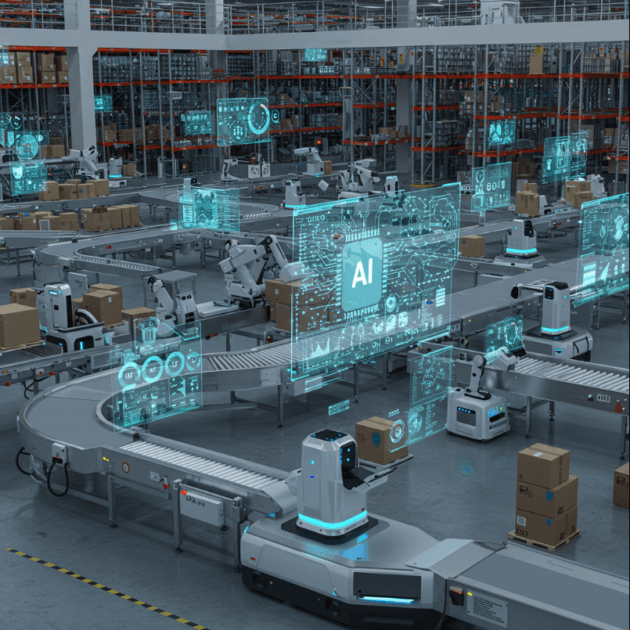Autonomous Warehouse Systems: The Future of Fulfillment

Autonomous warehouse systems are transforming the way businesses manage their supply chains. These innovative technologies are improving efficiency, reducing costs, and enhancing the customer experience. As the demand for faster deliveries increases, autonomous systems offer a solution to meet these growing expectations. In this article, we’ll explore the benefits of autonomous warehouse systems, how they work, and answer common questions about this technology.

The future of fulfillment lies in automation, and autonomous warehouse systems are at the forefront of this revolution. These systems leverage robotics, artificial intelligence, and machine learning to streamline warehouse operations, allowing businesses to process orders more efficiently and accurately. The result? Faster delivery times reduced operational costs, and improved customer satisfaction.
In the fast-paced world of e-commerce, businesses need a competitive edge. Autonomous warehouse systems provide just that. These systems take over repetitive tasks, reducing human error and allowing employees to focus on higher-value work. By adopting this technology, businesses can stay ahead of the curve and meet consumer expectations for quicker delivery.
Why Choose Autonomous Warehouse Systems?
Autonomous warehouse systems bring many advantages to businesses looking to streamline their operations. Let’s explore how these systems can benefit your warehouse, from speed and efficiency to cost savings and safety.
1. Better Speed and Efficiency
Autonomous warehouse systems are designed to work quickly and efficiently, making them much faster than traditional methods. Robots can handle multiple tasks, like picking, sorting, and packing products, all at once without taking breaks. This allows them to perform these tasks faster than human workers, speeding up the entire process. The use of smart algorithms and AI helps organize tasks most efficiently, ensuring that the workflow remains smooth and without delays. As a result, businesses can process more orders in less time and meet customer demands quickly.
2. Lower Costs
Operating a warehouse can be expensive, especially when you rely on human labor for manual tasks. Autonomous systems can drastically reduce labor costs by automating many of these tasks. Instead of hiring and training a large workforce, you can use robots to perform tasks like picking, packing, and sorting, which lowers the need for many employees. Additionally, automation reduces the chances of costly mistakes, such as incorrect orders or inventory issues, saving your business even more money in the long run.
3. Improved Accuracy
Accuracy is key to ensuring customer satisfaction. Autonomous warehouse systems are built with sensors and advanced technology that can pick and pack products with great precision. Unlike humans, who might make mistakes due to fatigue or distraction, robots work with perfect consistency. By reducing errors in the picking and packing process, these systems ensure that customers receive the correct items, leading to fewer returns and complaints. Improved accuracy also leads to better inventory management, helping businesses keep track of stock levels more effectively.
4. Easy to Scale
As your business grows, you’ll need to adjust your operations to keep up with higher order volumes. Autonomous warehouse systems make scaling easier. Since robots and automation systems can be added or upgraded with minimal effort, you can expand your warehouse’s capacity without a major overhaul. Whether you need more robots to handle a higher number of orders or a software update to manage increased demand, autonomous systems can grow with your business needs, making it simple to adapt to changes.
5. Faster Order Fulfillment
Customers today expect their orders to be processed quickly, often within a day or even hours. Autonomous warehouse systems help meet these expectations by speeding up the entire order fulfillment process. With robots performing repetitive tasks quickly, orders are picked, packed, and shipped in record time. This faster turnaround time leads to shorter delivery windows, which helps businesses meet consumer demands for quicker shipping, leading to happier customers and more repeat business.
6. Better Safety
Warehouses can be dangerous environments due to heavy lifting, repetitive tasks, and fast-paced work. Autonomous systems reduce the risk of injury by taking over the dangerous tasks. Robots can handle lifting heavy items, moving them across the warehouse, and sorting products, reducing the chance of workplace accidents. Workers can then focus on tasks that require human judgment and decision-making, creating a safer work environment overall. This not only protects employees but also reduces the likelihood of workers’ compensation claims and lost time due to injuries.
7. Environmentally Friendly
As businesses aim to become more sustainable, autonomous warehouse systems can play a big role in reducing your carbon footprint. These systems are often designed with energy efficiency in mind. By automating processes, businesses can reduce the energy needed for manual labor and optimize the use of resources. Robots, for example, are often more energy-efficient than running large teams of workers, and their precision helps reduce waste. By adopting autonomous systems, businesses can take a step toward sustainability while maintaining high efficiency.
8. 24/7 Operations
One of the major benefits of autonomous systems is that they can operate continuously without the need for breaks, sleep, or shifts. Unlike humans, robots can work around the clock, meaning that your warehouse can remain open 24/7. This constant operation ensures that orders are processed and shipped as soon as possible, even during off-hours or weekends. With 24/7 functionality, businesses can speed up their order fulfillment process and stay ahead of the competition by providing faster delivery times.
9. More Focus on High-Value Tasks
By automating routine tasks, businesses can free up their employees to focus on higher-value tasks that require creativity, problem-solving, and decision-making. Instead of spending time on repetitive tasks like sorting or packing, workers can be redirected to roles that drive innovation, improve customer experience, or enhance overall business strategy. This shift in focus can boost employee morale and productivity as workers engage in more meaningful work that adds value to the business.

Pros and Cons of Autonomous Warehouse Systems
Pros:
- Increased Speed and Efficiency: Automation speeds up processes and reduces human error.
- Lower Operating Costs: Automation reduces the need for a large workforce and lowers labor costs.
- Improved Accuracy: Fewer errors lead to fewer returns and happier customers.
- Safety: Robots can perform tasks that are dangerous or physically demanding.
- 24/7 Operation: Autonomous systems can work around the clock, boosting productivity.
Cons:
- High Initial Investment: Setting up an autonomous warehouse system requires significant capital.
- Technical Challenges: Integrating new technologies with existing systems can be complex.
- Maintenance Costs: While robots require less human labor, they still need regular maintenance and repair.
- Job Displacement: Automation may reduce the number of jobs for manual workers, which could lead to resistance.
Conclusion:
Autonomous warehouse systems are reshaping the logistics industry, offering unmatched benefits in terms of speed, accuracy, and cost savings. As e-commerce continues to thrive, adopting this technology is no longer a luxury but a necessity for businesses looking to stay competitive. Embrace the future of fulfillment today and see how autonomous systems can transform your operations!
Adopting autonomous warehouse systems offers a range of benefits that help businesses run more smoothly, efficiently, and cost-effectively. From faster order fulfillment and reduced costs to increased safety and the ability to scale with growth, these systems provide a competitive edge in today’s fast-paced market. As businesses continue to look for ways to improve their operations, autonomous warehouse systems offer a smart solution to meet both current and future needs.
Frequently Asked Questions (FAQ):
What are Autonomous Warehouse Systems?
Answer : Autonomous warehouse systems are technologies that use robotics, AI, and machine learning to automate the processes involved in warehouse management. They perform tasks like picking, packing, and shipping without human intervention, increasing efficiency and accuracy.
What are the Benefits of Autonomous Warehouse Systems?
Answer : The key benefits include increased efficiency, reduced costs, improved accuracy, faster order fulfillment, better safety, and support for sustainability efforts. These systems help businesses streamline operations, reduce human error, and improve customer satisfaction.
How Do Autonomous Warehouse Systems Work?
Answer : Autonomous warehouse systems use robots equipped with sensors and AI algorithms to perform tasks like item picking, sorting, and packaging. The system’s software optimizes routes and inventory management, enabling faster processing and shipping.
Are Autonomous Warehouse Systems Safe?
Answer : Yes, autonomous systems are designed to minimize the risk of accidents. Robots perform dangerous tasks like heavy lifting, reducing the chance of worker injuries. However, safety protocols are essential to ensure that workers and robots can coexist safely in the same space.
Can Autonomous Warehouse Systems Scale with My Business?
Answer : Yes, one of the major advantages of autonomous systems is their scalability. As your business grows, you can easily add more robots or expand the system to handle higher volumes of orders.
What are the Costs of Implementing Autonomous Warehouse Systems?
Answer : While the initial investment can be high, the long-term savings in labor and operational costs often justify the expense. The cost will depend on the size of your warehouse and the complexity of the system you choose.
How Can Autonomous Warehouse Systems Benefit E-Commerce Companies?
Answer : Autonomous warehouse systems are a game-changer for e-commerce businesses. They can process more orders, fulfill them faster, and reduce the chances of errors, all of which contribute to a better customer experience and increased sales.



